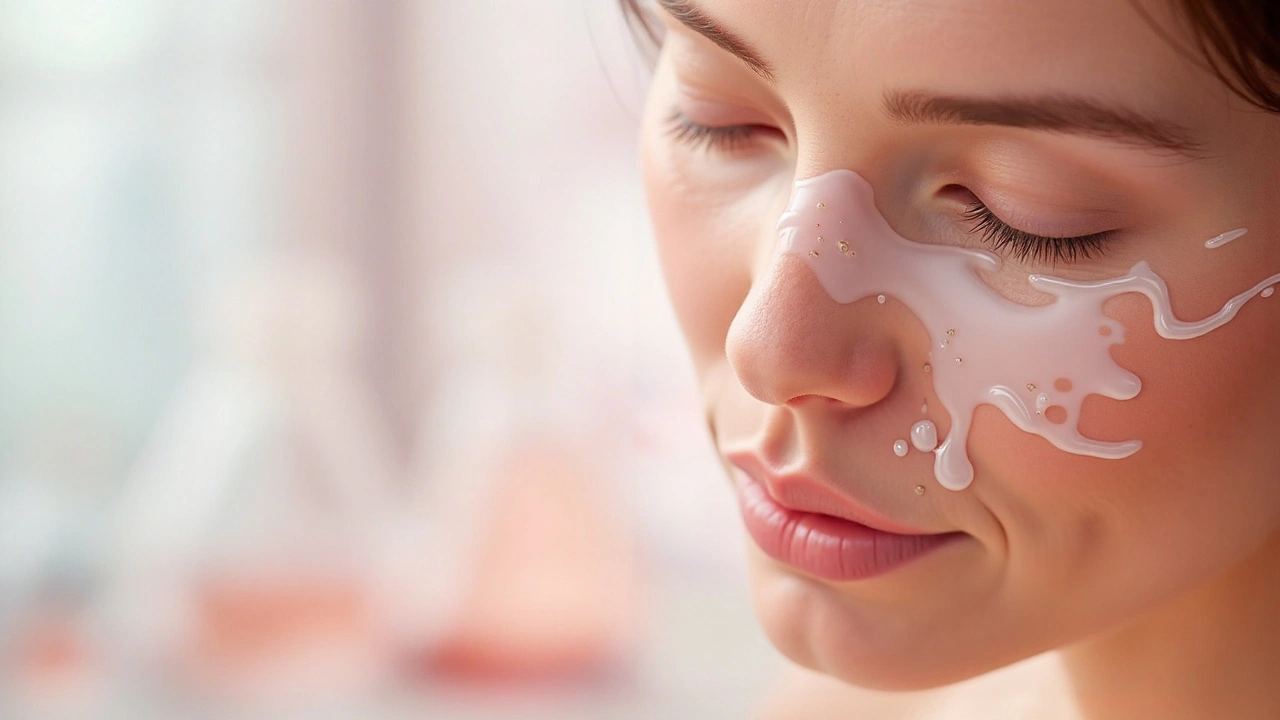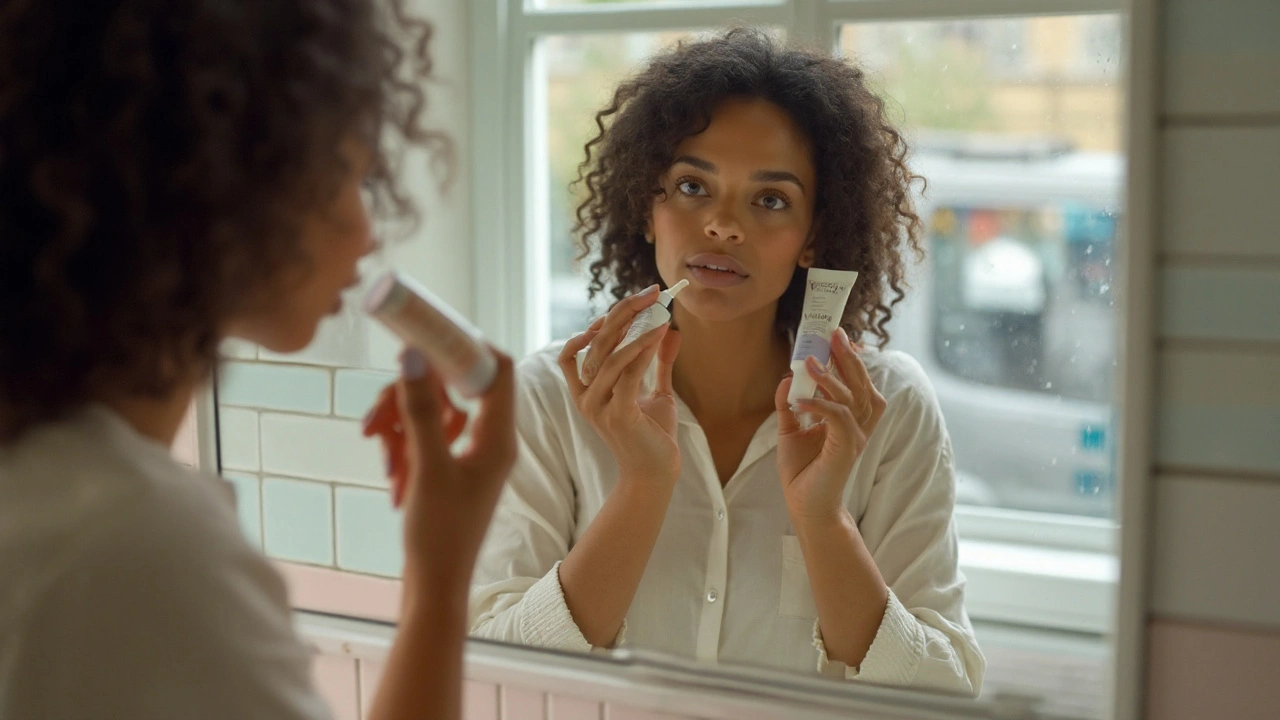Eflornithine is a topical cream (brand name Vaniqa) that inhibits the enzyme ornithine decarboxylase, slowing facial hair growth in women.
Key Takeaways
- Clinically proven to reduce visible facial hair by up to 50% after 8 weeks of consistent use.
- Works by blocking ornithine decarboxylase the enzyme that drives hair‑follicle cell division.
- Prescription‑only in the U.S., approved by the FDA U.S. Food and Drug Administration in 2000.
- Side effects are usually mild skin irritation; serious reactions are rare.
- Compared with laser, electrolysis, waxing, and depilatory creams, it offers a painless, daily‑use alternative.
What Is Eflornithine?
The active ingredient, eflornithine hydrochloride, was originally developed to treat African sleeping sickness. When reformulated as a 13.9% cream, it became the first FDA‑approved medication specifically for facial hair reduction in women. The cream is applied twice daily to clean, dry skin, typically on the chin, cheeks, or upper lip.
How Does It Work?
Eflornithine’s magic lies in its impact on ornithine decarboxylase the key enzyme in polyamine synthesis that fuels hair‑follicle proliferation. By blocking this enzyme, the drug reduces the rate at which hair‑shaft cells divide, leading to thinner, slower‑growing hairs. Clinical trials (e.g., a double‑blind study of 640 women) showed an average 35% reduction in hair count after four weeks, climbing to 50% by week eight.
Who Should Consider Eflornithine?
Ideal candidates are women with unwanted facial hair (hirsutism) who prefer a non‑invasive, painless approach. It can also help men with light‑colored or fine chin hair, though the product is not marketed for them. Contraindications include known hypersensitivity to eflornithine, active skin infections, or pregnancy (safety data are limited). A dermatologist a skin‑care specialist should evaluate any underlying hormonal disorders before starting treatment.
Step‑by‑Step Application Guide
- Cleanse the target area with a mild, fragrance‑free cleanser. Pat dry.
- Apply a pea‑sized amount of Eflornithine to each spot where hair appears. Use gentle circular motions until fully absorbed.
- Wait at least 5 minutes before applying other skin products (moisturizers, makeup).
- Repeat the process every morning and evening. Consistency is key; missing doses reduces effectiveness.
- Expect visible changes after 4-6 weeks. Continue for at least 12 weeks to lock in results.
Tip: Store the tube at room temperature, away from direct sunlight. If the cream hardens, let it sit for a few minutes; do not microwave.

Safety, Side Effects, and Precautions
Most users report mild redness, tingling, or dry skin during the first two weeks. These symptoms usually subside as the skin adapts. Less common reactions include rash, swelling, or pigmented patches. If any severe irritation occurs, discontinue use and contact a dermatologist.
Because the cream is topical, systemic absorption is minimal, but pregnant or nursing women should discuss risks with their healthcare provider. Also, avoid applying on broken skin or open wounds.
Cost and Insurance Considerations
In the United States, a 30‑gram tube (approximately one month of use) costs between $120‑$150 without insurance. Some pharmacies accept a prescription discount card, bringing the price down to $80‑$100. Insurance coverage varies; most plans treat it as a cosmetic medication, so out‑of‑pocket costs are common. For budget‑conscious users, buying a 90‑gram supply (three months) often saves 10%.
How Eflornithine Stacks Up Against Other Methods
| Method | Mechanism | Sessions / Applications | Pain Level | Cost (US$) | Duration of Effect |
|---|---|---|---|---|---|
| Eflornithine (Vaniqa) | Topical enzyme inhibitor | Twice‑daily cream | None | 120‑150 per month | Continuous with use; effect fades after 4‑6 weeks off |
| Laser Hair Removal | Laser‑induced follicle destruction | 6‑8 sessions | Low‑moderate (depends on skin type) | 200‑500 per session | 6‑12 months, permanent reduction after several cycles |
| Electrolysis | Electrical current destroys hair root | 30‑100+ minutes per area | Moderate (needles) | 50‑100 per hour | Permanent |
| Waxing | Physical removal of hair shaft | Every 3‑4 weeks | High (painful) | 30‑80 per session | 4‑6 weeks, hair regrows |
| Depilatory Creams | Chemical dissolution of protein | Every 1‑2 weeks | Low‑moderate (skin irritation possible) | 5‑15 per tube | 1‑3 weeks, hair regrows |
Choosing the right method hinges on pain tolerance, budget, and how long you want results to last. Eflornithine shines for people who want a painless, daily routine without the upfront cost of laser or electrolysis.
Real‑World User Experiences
Lisa, a 34‑year‑old marketing manager, started using Eflornithine after years of waxing her chin. Within five weeks, she noticed a “subtle thinning” and stopped waxing altogether. Her only complaint was mild dryness, which she managed with a fragrance‑free moisturizer.
Mark, a 45‑year‑old accountant, tried the cream on his thin neck hair. He reported a 30% reduction after two months, but found the twice‑daily schedule inconvenient for his busy travel schedule. He eventually switched to laser for the neck area while keeping the cream for his upper lip.
These anecdotes illustrate that the product works best when users commit to the routine and pair it with gentle skin‑care.
Related Topics to Explore
- Understanding hormone‑related hirsutism and treatment options
- Long‑term safety of topical enzyme inhibitors
- Insurance navigation for prescription hair‑removal products
- Comparing laser technology types (IPL vs. diode)
- Natural remedies and their efficacy versus pharmaceuticals

Frequently Asked Questions
How long does it take to see results with Eflornithine?
Most users notice a visible reduction in hair thickness after 4‑6 weeks of twice‑daily use. Full effect-about a 40‑50% decrease in hair count-usually appears around the 8‑week mark.
Can I use Eflornithine while pregnant or nursing?
Safety data for pregnant or lactating women are limited. The FDA categorizes it as pregnancy‑category C, meaning risk cannot be ruled out. Consult your obstetrician before starting.
Do I need a prescription to buy Eflornithine?
Yes. In the United States, Vaniqa is prescription‑only. Your dermatologist or primary‑care physician can write a script, which you fill at a pharmacy or order through a tele‑dermatology service.
What are the most common side effects?
Mild skin irritation, redness, and a tingling sensation are the most frequent. These usually fade after two weeks. If you develop a rash, swelling, or severe itching, stop using the cream and seek medical advice.
How does Eflornithine compare cost‑wise to laser hair removal?
Eflornithine costs roughly $120‑$150 per month, while laser sessions can run $200‑$500 each. Over a year, laser may be cheaper if you need only 6‑8 sessions, but Eflornithine offers a painless, maintenance‑free alternative without the upfront laser fees.
Can I use the cream on other body parts?
The label is approved for the face only. Using it on the neck, arms, or legs is off‑label and not studied. If you choose to experiment, test a tiny area first and monitor for irritation.
How should I store the product?
Keep the tube at room temperature, away from direct sunlight and heat sources. Tighten the cap after each use to prevent oxidation.

Anil Karwal
The guide does a solid job of summarizing how Vaniqa works, from enzyme inhibition to the typical application routine. It also lays out cost considerations and compares the cream to other hair‑removal methods without getting lost in jargon.
Suresh Pothuri
While the article is generally accurate, it omits several critical points that a well‑informed reader should know. Firstly, the drug’s efficacy varies significantly with underlying hormonal conditions, which the piece glosses over. Secondly, the cost analysis fails to mention generic alternatives that are available in India, where the price differential can be as high as 70 % compared to the U.S. Lastly, the safety section should stress that long‑term systemic absorption, though minimal, has not been exhaustively studied, especially in populations with compromised skin barriers.
Millsaps Mcquiston
Good points. The cream works best when you keep using it every day and watch for any skin reaction.
michael klinger
One must consider the broader context in which such pharmaceuticals are marketed. The timing of Vaniqa’s FDA approval coincided with a surge in cosmetic‑driven lobbying, raising questions about the underlying motivations of the regulatory bodies. Moreover, the formulation’s origins as a treatment for African sleeping sickness suggest a repurposing strategy that may prioritize profit over thorough safety evaluations for chronic, non‑life‑threatening conditions.
Matt Laferty
The concerns raised in the previous comment, though dramatic, deserve a measured and comprehensive response.
Vaniqa’s mechanism of action, inhibition of ornithine decarboxylase, is a well‑documented biochemical pathway that has been studied for decades in both infectious disease and dermatological contexts.
Clinical trials involving hundreds of participants have consistently demonstrated a reduction in hair count ranging from 30 % to 50 % when the cream is applied twice daily for a minimum of eight weeks.
These data are published in peer‑reviewed journals, and the methodology adheres to the standards set by the FDA for efficacy and safety assessments.
It is also important to note that the safety profile, while not entirely free of adverse events, is characterized primarily by mild, transient skin irritation that resolves with continued use or the addition of a gentle moisturizer.
The claim that the approval was purely a product of lobbying neglects the rigorous post‑marketing surveillance that continues to monitor for rare but serious complications.
In fact, a recent pharmacovigilance report filed in 2022 identified only a handful of severe reactions among tens of thousands of prescriptions, reinforcing the notion that systemic absorption remains negligible.
From a cost perspective, while the retail price may appear stiff, many insurance plans now offer discount programs, and bulk purchasing can reduce the monthly expense by up to ten percent.
Furthermore, when compared to laser therapy, which often requires multiple high‑cost sessions and carries the risk of burns or pigment changes, Vaniqa presents a non‑invasive alternative that can be incorporated seamlessly into a daily skincare routine.
Patients with underlying hormonal disorders should indeed seek endocrinological evaluation before commencing any hair‑reduction regimen, a step that the original guide rightly recommends.
However, it would be a mistake to conflate the existence of a small subset of high‑risk individuals with a blanket condemnation of the medication’s overall safety.
The pharmacodynamics of eflornithine are such that it acts locally, and the molecule’s size limits its transdermal penetration, thereby minimizing systemic exposure.
For those who are pregnant or nursing, the standard precautionary principle applies: consult a physician, as the data are insufficient to categorically declare safety.
In essence, the product fills a niche for patients who desire a painless, reversible method of managing facial hair without resorting to permanent destruction of follicles.
The psychological benefit of reduced hair visibility should not be underestimated, as many users report improved self‑esteem and decreased social anxiety.
While vigilance remains essential, dismissing Vaniqa outright on the basis of speculative conspiracies does a disservice to the many individuals who have found genuine relief.
A balanced approach that weighs empirical evidence against individual risk factors is the most responsible path forward.
Ultimately, informed consent, regular dermatologist follow‑up, and realistic expectations constitute the pillars of safe and effective use.
Genie Herron
I feel so overwhelmed reading about the cost it just makes me want to scream it's unfair everyone deserves smooth skin without breaking the bank
Danielle Spence
When we discuss personal grooming, we must remember that placing value on outward appearance can fuel unrealistic standards, and it is morally problematic to prioritize cosmetic solutions over addressing underlying health issues.
Dhanu Sharma
Looks like a solid overview
Edward Webb
Indeed, the comprehensive nature of the guide provides a useful reference for both newcomers and seasoned users, and it invites a broader conversation about how we integrate medical aesthetics into everyday self‑care practices.
Snehal Suhane
Oh wow, a supeeer detailed guide… because we all need a PhD in hair chemistry before we can smudge a cream on our chin, right?